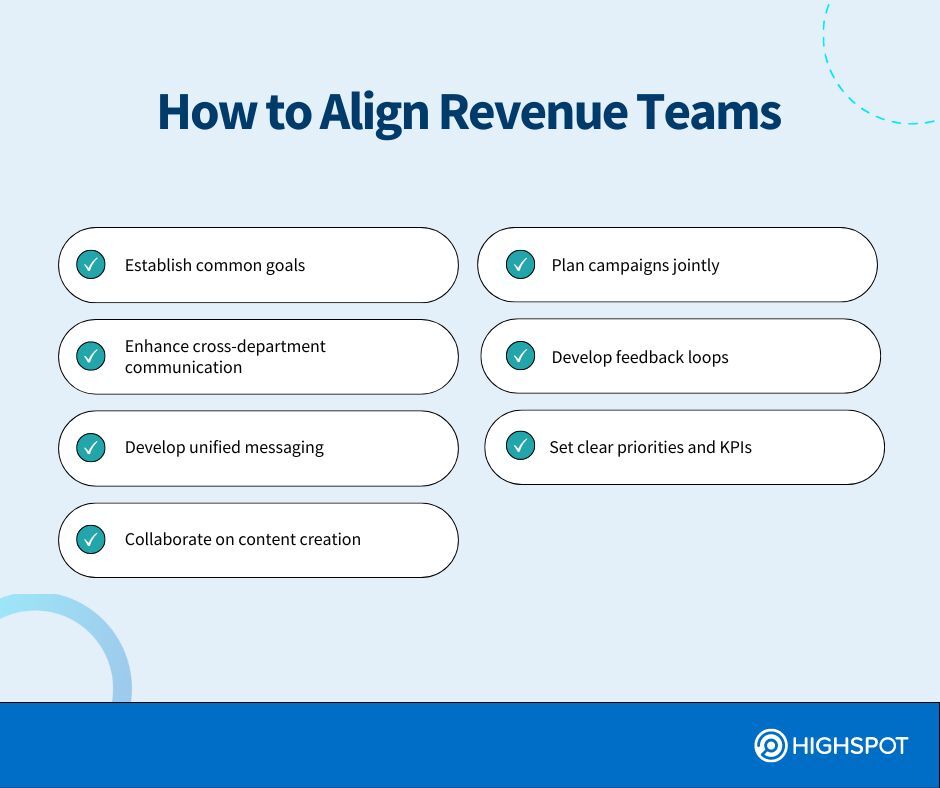Ever feel like your sales team is working twice as hard but not seeing the results your business is aiming for? You’re not alone. Many teams face challenges that keep them from hitting their targets. Whether it’s sales and marketing not syncing up, using outdated tools, or outdated processes, these problems can slow progress.
Adopting effective revenue enablement strategies is essential to addressing these challenges and driving your sales teams’ success. It ensures all customer-facing teams are equipped to provide a cohesive, consistent customer experience that maximises growth. In fact, Gartner predicts that around 60% of enablement functions will focus on empowering these teams by 2026.
In this post, we’ll take a deep dive into:
- The Importance of Revenue Enablement
- Proven Revenue Enablement Strategies
- How to Overcome Revenue Enablement Problems
The Importance of Revenue Enablement
Modern buyers expect personalised experiences and seamless interactions across various channels in today’s ever-changing market. Revenue enablement can help meet these expectations effectively by driving a more holistic view of the customer journey and full alignment on revenue generation.
When all revenue teams–from sales and marketing to product and customer success–are in sync, they can better understand customer preferences, quickly adapt to trends, and rapidly close deals. This, in turn, can help achieve 19% faster revenue growth and a 15% increase in profitability.
Ultimately, revenue enablement is more than just improving sales performance—it’s about building lasting relationships and driving revenue throughout the customer lifecycle.
Download Now: Gartner® Market Guide for Revenue Enablement Platforms
Proven Revenue Enablement Strategies
Ready to prioritise revenue enablement to break down silos, empower your teams, and achieve business goals? Let’s explore some actionable strategies to help you get started:
1. Understand the Customer
Understanding your existing and new customers is the foundation of revenue enablement. Start by creating buyer personas and segmenting them into groups based on motivation, preferences, and purchasing patterns. This lets you customise your sales approach for each customer segment.
Next, figure out their problems and challenges so you can provide messaging that shows how your product or service can address these pain points.
Finally, tune into what your customers need and expect from you. Listen to their feedback and analyse historical sales data. That way, you can give customers the solutions they’re looking for.
2. Map the Buying Journey
Identify and document the different phases a customer experiences, from initial awareness to final decision. Tailor your engagement strategies for each stage using scripts, content, and sales plays designed to meet each touchpoint’s demands.
Digging into this level of detail allows you to create a buyer journey map that guides content management, revenue enablement, and your overall sales and marketing strategy. This ensures every interaction with prospects focuses on what they value most, leading to better engagement and higher conversion.
Then, building on the mapped buyer’s journey, focus specifically on the key stages each customer goes through.
- Awareness stage: Buyers recognise their needs or problems at this initial stage. Use educational content, such as blogs and whitepapers, that informs and helps them better understand their situation.
- Consideration stage: Buyers evaluate the various solutions available to them. Provide detailed comparisons, case studies, and analyst or expert insights that showcase your solutions’ strengths and benefits.
- Decision stage: As buyers prepare to purchase, offer compelling content like product demos, testimonials, and strong calls to action that can persuade and convert them into customers.
Remember that personal interactions still matter. Forrester found that most initial purchases (36%) and renewals (31%) happen through direct engagement with an account rep–which means sales teams need to be actively involved in facilitating these transactions. While digital buying is also on the rise, making up a quarter of initial purchases, it’s clear that a mix of personal and digital engagement strategies works best.
3. Align Revenue Teams
Ensure your sales, marketing, revenue operations (revops), customer success, and other revenue teams are on the same page to provide a consistent customer experience at every touchpoint, which will improve revenue predictability. Here are ways to boost collaboration and achieve revenue alignment:

- Establish common goals: Define shared revenue goals that align with your organisation’s overall business strategy. Ensure your goals are SMART (Specific, Measurable, Achievable, Relevant, Time-Bound).
- Enhance cross-department communication: Meet regularly to discuss strategies and challenges, share insights, and coordinate revenue-generating activities across the buyer journey.
- Develop unified messaging: Maintain consistent messaging across teams to strengthen your brand’s positioning. Your brand messaging should encompass key value propositions, voice, and tone across all channels and touchpoints.
- Collaborate on content creation: Involve all teams to utilise their expertise and create compelling materials that resonate with customers. A content governance framework can help maintain quality standards and alignment with brand guidelines.
- Plan campaigns jointly: Campaigns are most effective when designed collaboratively with input from all revenue teams. Bringing together insights from sales, marketing, and customer success teams allows you to tailor campaigns that optimise customer lifecycle stages, from awareness and acquisition to retention and advocacy.
- Develop feedback loops: Feedback loops are crucial for continuous improvement. They provide valuable insights into lead quality, customer preferences, and campaign performance. A structured process for collecting and sharing feedback can help efficiently pinpoint trends, patterns, and areas for improvement so you can iterate on strategies more effectively.
- Set clear priorities and KPIs: This helps keep teams focused on what matters most. Develop and review performance metrics for all teams so you can track progress and course-correct as needed.
4. Refine Sales Process
A smooth and efficient sales process is key to maximising revenue growth. Optimise your sales process by mapping each step, from lead generation to negotiation and closing, and finding and removing bottlenecks. You should also integrate enablement technology that automates mundane tasks and supports personalised customer experiences.
5. Develop a Comprehensive Training Program
Equip your revenue teams with the necessary skills and knowledge through targeted training and coaching. Assess individual and team strengths and weaknesses to tailor these efforts. Regular updates to onboarding and sales training platforms will keep new hires up to speed and current staff abreast of industry developments.
- Follow sales training best practices: Implement regular training sessions, including role-playing scenarios, cross-sell and upsell strategies, and go-to-market (GTM) initiatives to ensure teams can handle various sales situations. This ensures all team members are confident and competent.
- Product knowledge: Regularly update your team about product changes and enhancements to maintain high levels of expertise.
- Incorporate industry trends: Stay ahead of the curve by training your team on the latest trends, such as AI and engagement channels, which can impact customer satisfaction and experience.
Though some companies might consider investing in employees’ growth an afterthought, it can significantly boost profitability. McKinsey research shows that companies that do so are more likely to become big players in the industry and can average more than $1 billion in economic profit.
6. Content Strategy for Revenue Enablement
The best way for sales reps to connect with today’s educated buyers is to present compelling content that convinces them to move to the next stage of the customer journey. Develop a content management strategy that supports your sales processes and addresses buyer needs along the way.
Start by auditing existing content and gathering feedback from sales, customer success, and marketing team members about what works. Then, create content that educates, informs, and entertains your audience to build trust and authority.
Develop Sales Playbooks
Craft sales plays and playbooks that guide your sales team through various buyer personas, interactions, and scenarios. This includes templates, scripts, presentations, and objection-handling guides. Be sure to update your sales plays regularly to reflect changes in the market, customer needs, and your product/service offerings.
Focus on Timing
Strategise the timing of content delivery to maximise impact, ensuring materials are accessible when the sales team needs them the most.
Measure Content Effectiveness
Regularly analyse the impact of your sales and marketing content to understand what resonates with your audience and refine strategies accordingly. Consider metrics like internal engagement, external engagement, and impact on revenue.
7. Measuring Revenue Enablement ROI
Define and measure the success of your revenue enablement efforts by setting shared goals and tracking relevant KPIs such as win rates, conversion rates, average deal size, customer lifetime value, customer loyalty, and sales cycle length. Prepare dashboards for visibility into the impact on revenue growth.
8. Invest in the Right Tools
Select technology solutions that complement your sales strategies, enhance customer engagement, and streamline operations, ensuring every tool adds value to your enablement ecosystem. The most common revenue-supporting solutions include customer relationship management (CRM), revenue enablement platforms, analytics, and marketing automation.
A compelling example of tool investment is evident at RingCentral, where they dubbed Highspot “mission control.” that their organisation goes to for answers. Furthermore, instead of ‘scientific wild guesses,’ the all-in-one enablement platform has streamlined access to data and helped sales reps understand and target customer pain points. It’s a game-changer for RingCentral, showing how the right tools can make a big difference in meeting customer needs and driving revenue growth.
Download Now: Gartner® Market Guide for Revenue Enablement Platforms
Addressing Common Revenue Enablement Problems
Revenue enablement has its challenges, like any multi-faceted process. Sales leaders must tackle these challenges to ensure everything runs smoothly among customer-facing teams and engagement channels.
Resistance to Change
Change often meets resistance because it creates uncertainty and discomfort in some team members. People naturally stick to familiar routines, so introducing new processes or tools might trigger fear. Resistance can slow down or derail new enablement initiatives unless managed with clear communication and support:
- Engage leadership support: Ensure top management champions new initiatives to set a positive tone and encourage adoption.
- Transparent communication: Regularly communicate the benefits and progress of new strategies to all stakeholders to build trust and buy-in.
- Pilot programs: Test new processes or tools in small, controlled environments to demonstrate benefits and gather user feedback before wide-scale implementation.
Technology Adoption and Integration Issues
Technology is a cornerstone of revenue enablement, but adoption and integration can be challenging. To ensure technology supports rather than hinders your efforts:
- Choose user-friendly tools: Select an intuitive and easy-to-use tech stack to minimize the learning curve and enhance adoption rates.
- Offer regular training and coaching: Provide continuous support to help team members overcome technological hurdles.
- Employ integration expertise: Collaborate with IT specialists to ensure new tools integrate with existing systems, preserving data integrity and workflow continuity.
Achieve Winning Results with Highspot
Embracing a comprehensive and holistic approach to revenue enablement can enhance sales productivity and performance. Highspot’s robust platform empowers enablement teams to make data-driven decisions that reduce churn and boost customer retention. By optimising every interaction throughout the entire customer journey, your team can drive revenue and contribute to sustained business success.
Highspot equips all customer-facing roles with what they need, when and where they need it, to elevate customer interactions and drive growth. It’s not only about hitting revenue targets and growth, but also about delighting customers at every turn.
Request a Highspot demo, transform challenges into opportunities, and achieve winning results across your sales initiatives.




